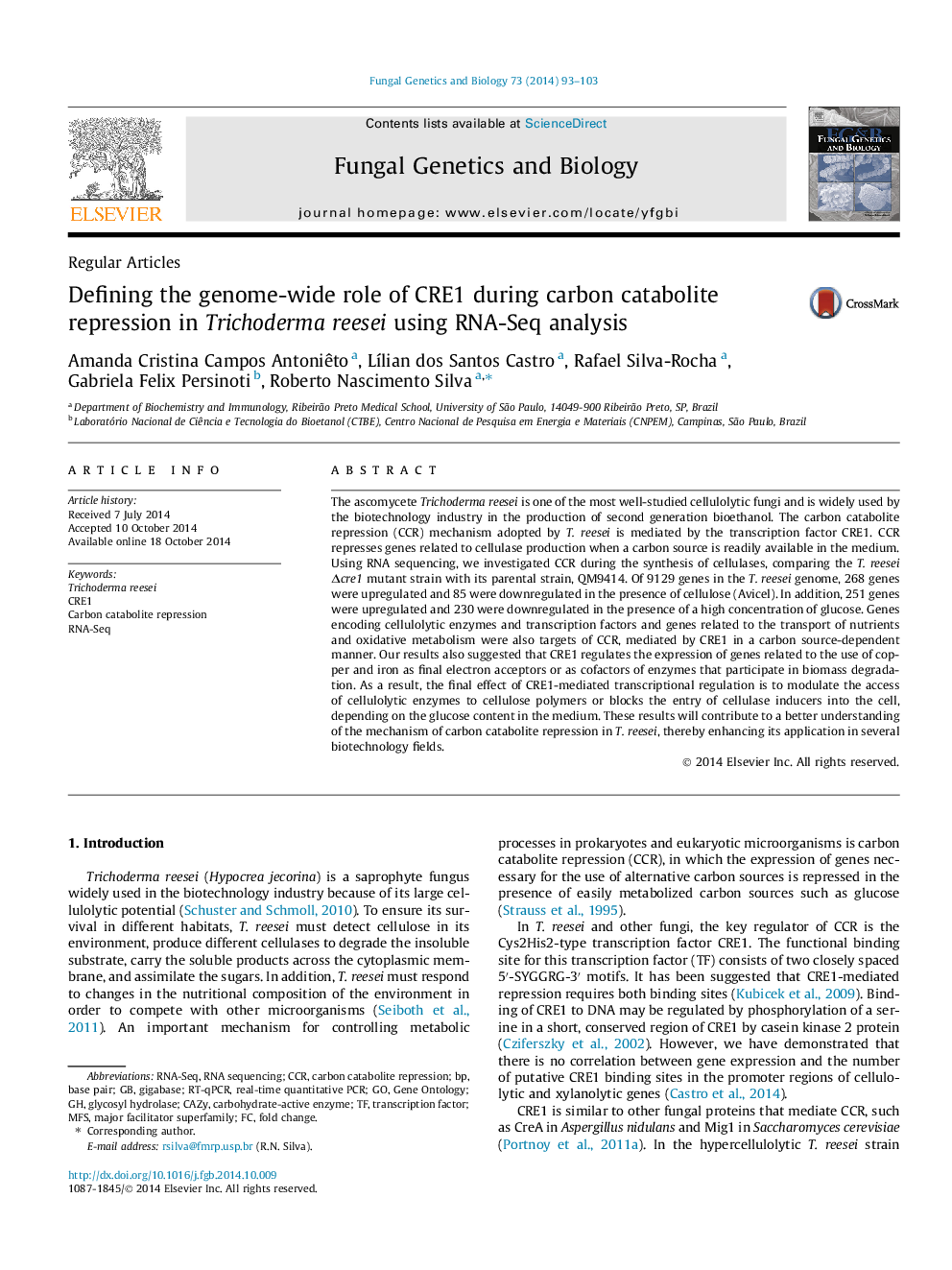| کد مقاله | کد نشریه | سال انتشار | مقاله انگلیسی | نسخه تمام متن |
|---|---|---|---|---|
| 2180744 | 1550018 | 2014 | 11 صفحه PDF | دانلود رایگان |

• CRE1 regulates inducer and cooper transporters in T. reesei during CCR.
• CRE1 controls the CAZy gene expression in indirectly way.
• Most of MFS permeases are under CRE1 regulation during CCR.
The ascomycete Trichoderma reesei is one of the most well-studied cellulolytic fungi and is widely used by the biotechnology industry in the production of second generation bioethanol. The carbon catabolite repression (CCR) mechanism adopted by T. reesei is mediated by the transcription factor CRE1. CCR represses genes related to cellulase production when a carbon source is readily available in the medium. Using RNA sequencing, we investigated CCR during the synthesis of cellulases, comparing the T. reesei Δcre1 mutant strain with its parental strain, QM9414. Of 9129 genes in the T. reesei genome, 268 genes were upregulated and 85 were downregulated in the presence of cellulose (Avicel). In addition, 251 genes were upregulated and 230 were downregulated in the presence of a high concentration of glucose. Genes encoding cellulolytic enzymes and transcription factors and genes related to the transport of nutrients and oxidative metabolism were also targets of CCR, mediated by CRE1 in a carbon source-dependent manner. Our results also suggested that CRE1 regulates the expression of genes related to the use of copper and iron as final electron acceptors or as cofactors of enzymes that participate in biomass degradation. As a result, the final effect of CRE1-mediated transcriptional regulation is to modulate the access of cellulolytic enzymes to cellulose polymers or blocks the entry of cellulase inducers into the cell, depending on the glucose content in the medium. These results will contribute to a better understanding of the mechanism of carbon catabolite repression in T. reesei, thereby enhancing its application in several biotechnology fields.
Figure optionsDownload high-quality image (193 K)Download as PowerPoint slide
Journal: Fungal Genetics and Biology - Volume 73, December 2014, Pages 93–103